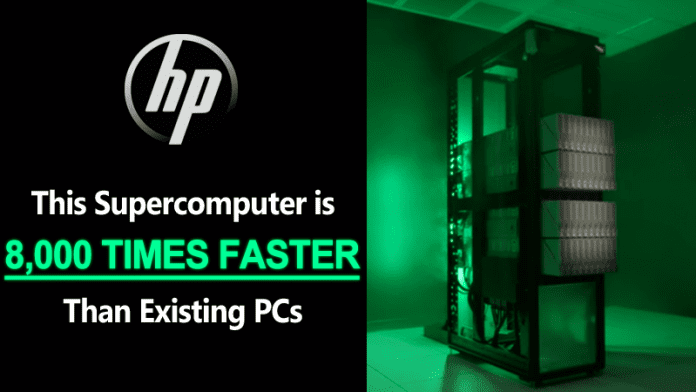Hewlett Packard (HP) Enterprise’s computer of the future, the prototype leads the company’s attempt to transform the primary architecture by which all computers have been built in the past 60 years. As HPE explains, it is “a concept that puts memory, not processing, at the center of the computing platform to realize performance and efficiency gains not possible today”. The company Hewlett-Packard (HP) Enterprise has been working since the year 2014 on a prototype. This would be the first time that there is shown a working system. Hewlett Packard (HP) Enterprise will use the supercomputer in high-end servers for companies like the tech giant Google and Facebook. The machine makes use of photonics in order to send data with the use of light, which helps the processor at a high speed to gain access to data from a huge amount of memory. In mainstream PCs, this process is delayed because data has to go through different processors. In The Machine, different processors simultaneously use the same memory pool, which would greatly accelerate the calculations. The company Hewlett-Packard (HP) Enterprise said that “It’s simulations show that memory-driven computing can achieve improved execution speeds up to 8,000 times faster than conventional computers”. And not only that even this new supercomputer also has the capabilities of storing huge amounts of data in smaller spaces, which will be very efficient as well as it will also reduce the space required by an entire data center.
The Executive Vice President and General Manager of the Hewlett-Packard (HP) Enterprise, Antonio Neri said that “With this prototype, we have demonstrated the potential of Memory-Driven Computing and also opened the door to immediate innovation”. Now, let’s have a look at the technical specs, as the current prototype has 8 TB of RAM, which is equivalent to 30 times that of a conventional server. The company Hewlett-Packard (HP) Enterprise plans somewhere between 8 TB and hundreds of terabytes of RAM to use in its supercomputers. The company is also working to create a new type of memory called Memristor, which should be able to keep all its data, even if the device is turned off. HP hopes that its Memristor also gets ready by the time when The Machine was expected to arrive in the year 2019 or 2019 into the market.



